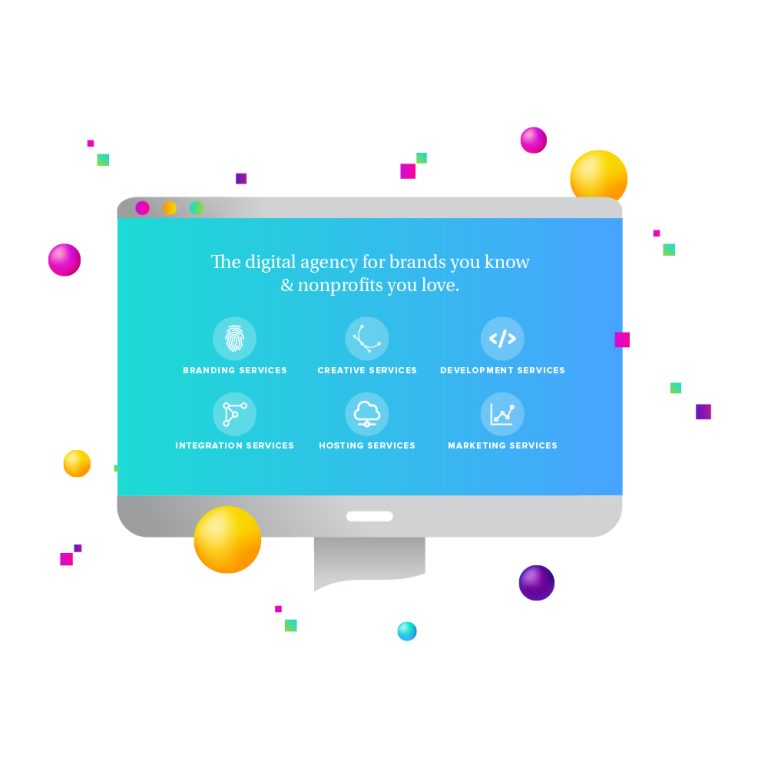
Influencer marketing has evolved significantly over the past few years. While mega influencers with millions of followers once dominated the landscape, there’s now a growing shift towards collaborating with micro influencers and nano influencers. These influencers, who have smaller but highly engaged followings, offer more authentic connections with their audience.
Understanding Micro Influencers and Nano Influencers
Definitions and Characteristics
Micro Influencers: Typically, micro influencers have between 10,000 to 100,000 followers. They are known for their niche content and close-knit communities. Micro influencers often have a deep understanding of their audience’s preferences and interests. They are usually content creators who focus on specific areas such as beauty, fitness, travel, or technology, and they cultivate a loyal following by sharing high-quality, relevant content.
Nano Influencers: Nano influencers have between 1,000 to 10,000 followers. Despite their smaller reach, they often have very high engagement rates. Nano influencers are usually everyday consumers who are passionate about specific topics or products. Their recommendations often come across as genuine and personal, making them highly trusted by their followers.
Comparison with Mega Influencers
Follower Count and Reach: Mega influencers boast millions of followers, offering brands extensive reach. However, this vast audience can often be less targeted and engaged compared to the smaller, more specific followings of micro and nano influencers. The content of mega influencers tends to reach a broader, more general audience, which may not always align with the niche interests of potential customers.
Engagement Rates and Audience Trust: Micro and nano influencers typically have higher engagement rates because they interact more personally with their followers. This fosters a sense of trust and authenticity that is harder for mega influencers to replicate. Studies show that micro influencers can generate up to 60% more engagement compared to their larger counterparts.
Cost-Effectiveness and ROI: Collaborating with micro and nano influencers is generally more cost-effective. Brands can work with multiple smaller influencers within the same budget required for one mega influencer, often resulting in higher ROI due to better engagement and targeted reach. Additionally, smaller influencers are often more flexible and willing to negotiate terms, making them more accessible for smaller brands and startups.
Benefits of Collaborating with Micro Influencers and Nano Influencers
Higher Engagement Rates
Engagement metrics such as likes, comments, shares, and click-through rates are crucial in measuring the success of social media campaigns. Micro and nano influencers often have significantly higher engagement rates because their followers are more likely to interact with their content. For example, a study by Influencer Marketing Hub found that nano influencers have an average engagement rate of 7%, compared to 1.7% for mega influencers. This higher engagement translates into more meaningful interactions and a greater impact on audience behavior.
Authentic and Trustworthy Connections
In today’s digital age, authenticity is paramount. Micro and nano influencers build trust with their audience by sharing genuine, relatable content. Their endorsements feel more like personal recommendations rather than paid promotions, making their followers more likely to act on them. This authenticity is particularly valuable in an era where consumers are increasingly skeptical of traditional advertising and seek out genuine voices they can trust.
Niche Audiences
Micro and nano influencers often cater to specific demographics and interest groups. This allows brands to target niche markets effectively. For example, a vegan skincare brand might collaborate with a nano influencer who is known for promoting plant-based lifestyles, ensuring that their message reaches a highly relevant audience. These influencers often have in-depth knowledge of their niche, allowing them to create content that resonates deeply with their followers and drives engagement.
Cost-Effectiveness
Working with micro and nano influencers is often more budget-friendly. Brands can engage multiple influencers within the same budget required for a single mega influencer, allowing for diverse and widespread campaign strategies. This flexibility can lead to better allocation of marketing resources and higher overall ROI. Additionally, smaller influencers are often more open to creative collaborations and long-term partnerships, providing brands with more opportunities for sustained engagement.
Strategies for Identifying and Collaborating with Micro and Nano Influencers
Identifying the Right Influencers
Tools and Platforms: Utilize influencer marketing platforms like AspireIQ, Upfluence, and Traackr to find micro and nano influencers who align with your brand values and target audience. These platforms offer advanced search filters, analytics, and campaign management tools to streamline the influencer discovery process.
Criteria for Selection: Look for influencers with relevant content, consistent posting habits, and genuine engagement with their followers. Analyze their previous collaborations and audience demographics to ensure a good fit. Consider factors such as the influencer’s reach, engagement rate, content quality, and alignment with your brand’s messaging and values.
Building Relationships
Approaching Influencers: Personalize your outreach messages to show that you’ve done your research. Highlight why you think they are a good fit for your brand and what you can offer them in return. Be transparent about your expectations and the benefits of the collaboration. Building a genuine connection from the outset can help foster a positive and productive partnership.
Creating Mutually Beneficial Partnerships: Ensure that collaborations provide value to both parties. Offer fair compensation, creative freedom, and potential long-term partnerships. Consider offering additional incentives such as exclusive access to new products, promotional support, and opportunities for professional growth.
Campaign Planning and Execution
Setting Clear Goals and Objectives: Define what you aim to achieve with the collaboration, whether it’s brand awareness, website traffic, or sales conversions. Clear goals will help you measure the success of your campaign and make necessary adjustments.
Crafting Effective Collaboration Strategies: Collaborate on content ideas that align with the influencer’s style and resonate with their audience. Provide guidelines but allow creative freedom. Consider various content formats such as sponsored posts, product reviews, giveaways, and behind-the-scenes content to keep the campaign dynamic and engaging.
Monitoring and Measuring Campaign Success: Track key performance indicators (KPIs) such as engagement rates, click-through rates, and conversion rates to assess the campaign’s effectiveness. Use analytics tools to gather insights and optimize future campaigns. Regularly communicate with influencers to gather feedback and make necessary adjustments.
Challenges and Considerations
Managing Multiple Influencers
Coordination and Communication: Working with multiple influencers can be challenging. Use project management tools and maintain clear, consistent communication to ensure smooth collaboration. Establish a centralized system for tracking deliverables, deadlines, and performance metrics.
Tools for Managing Influencer Campaigns: Platforms like Hootsuite and Buffer can help manage content schedules and monitor campaign performance. These tools offer features such as social media scheduling, analytics, and reporting to streamline campaign management.
Ensuring Authenticity and Compliance
Avoiding Inauthentic Endorsements: Encourage influencers to share their genuine opinions and experiences. Authenticity is key to maintaining trust with their audience. Provide influencers with detailed product information and encourage them to use the products before promoting them.
Adhering to Legal and Regulatory Guidelines: Ensure that all collaborations comply with advertising standards and disclosure regulations. Influencers should clearly disclose any paid partnerships. Stay informed about the latest guidelines from regulatory bodies such as the Federal Trade Commission (FTC) and ensure that your campaigns are fully compliant.
Future Trends in Micro and Nano Influencer Marketing
Increasing Demand and Competition
Growing Popularity: As more brands recognize the value of micro and nano influencers, the demand for their collaboration will increase. Brands need to stay competitive by offering attractive collaboration terms and fostering strong relationships. The growing popularity of these influencers is expected to lead to more sophisticated influencer marketing strategies and higher expectations from both brands and influencers.
Strategies for Standing Out: Focus on building long-term partnerships and creating unique, engaging content that resonates with the influencer’s audience. Offer personalized and exclusive experiences to influencers and their followers. Leverage data and insights to tailor your campaigns and enhance their impact.
Technological Advancements
Role of AI and Data Analytics: Advanced analytics tools can help brands identify the most effective influencers and measure campaign success more accurately. AI can assist in predicting trends, optimizing content, and personalizing campaigns to maximize engagement and ROI.
Future Tools and Platforms: Emerging technologies will continue to enhance the way brands and influencers collaborate, making campaigns more efficient and impactful. Innovations such as augmented reality (AR), virtual reality (VR), and blockchain technology are expected to play a significant role in the future of influencer marketing, offering new ways to engage audiences and ensure transparency and authenticity.
The rise of micro and nano influencers marks a significant shift in the digital marketing landscape. These influencers offer authentic connections, higher engagement rates, and cost-effective collaborations. By understanding their value and implementing effective strategies, brands can leverage the power of micro and nano influencers to achieve their marketing goals. As the influencer marketing industry continues to evolve, brands that stay ahead of the trends and foster genuine relationships with influencers will be well-positioned for success.
At New Target, we specialize in harnessing the power of these influencers through a Comprehensive Digital Marketing Strategy that integrates the latest trends and technologies. Our expertise in Social Media Shopping ensures your brand is seamlessly woven into the consumer’s online journey, while our innovative approaches in Machine Learning in Digital Marketing and Generative AI in Digital Marketing allow for highly personalized and effective campaigns. Partner with New Target to elevate your brand’s digital presence and stay ahead in the ever-evolving marketing landscape.



